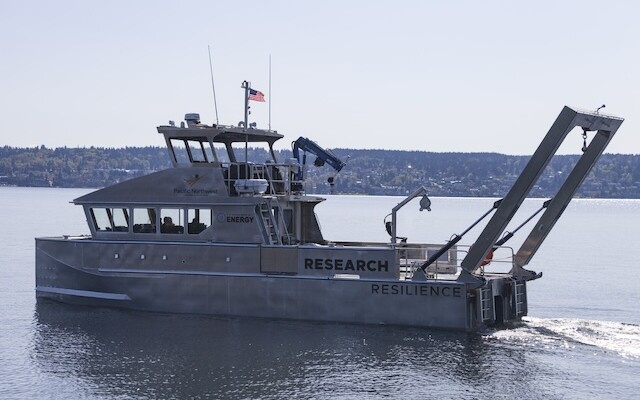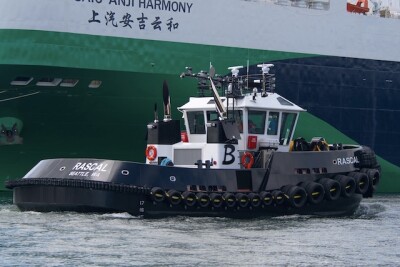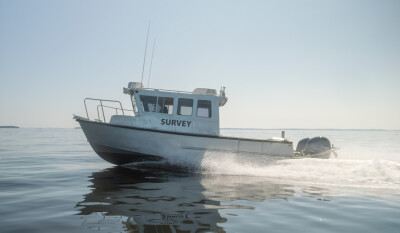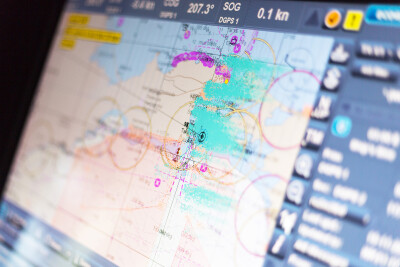Seattle-based Snow & Co. has delivered a 49.7'x15.9'x7.54' hybrid catamaran aluminum research vessel to the U.S. Department of Energy’s Pacific Northwest National Laboratory (PNNL).
Resilience was designed to demonstrate Incat Crowther and Snow’s abilities in designing and building low emissions vessels that deliver practical solutions for their scientific mission requirements.
Incat Crowther’s design features a 28-sq.-meter main deck equipped with a 5,000-lb. capacity A-frame, 1,000-lb. capacity boom crane and a 500-lb. capacity movable davit in addition to access to a foldable swim platform, in an effort to extract maximum functionality from the space. A set of stairs offer direct access from the main deck to the upper deck and flybridge, which affords all-round visibility.
“What attracted us to this project was the opportunity to tackle the complexities of hybrid systems amidst the growing trend of electrification,” said Chris Watson, the shipyard’s project manager. “We aimed to expand our knowledge of this emerging technology by pushing the boundaries in design, installation, and integration alongside our partners, Incat Crowther and Pacific Power Group. The result is a vessel capable of high-speed transit in diesel mode and quiet, efficient operation in electric mode, enabling the client to conduct research with minimal noise disruption and reduced transit time to remote areas.”
The new cat will be able to support the research of six scientists in a tailored layout containing multiple research workstations and convertible sleeping arrangements, providing PNNL a capable platform to efficiently carry out its research.
The vessel, which has a 3.5' draft, is powered by a parallel hybrid-electric propulsion system, consisting of two Volvo Penta D8-510 main engines capable of producing 501 hp at 2,850 rpm each and supplemented by two Danfoss Editron EM-PMI375-T200-2600 motor-generators. The mains connect to wheels (manufacturer unspecified) through Twin Disc MGX-5075 SC gearboxes. The electric propulsion mode allows the vessel to operate quietly on electric power between 1-6 knots for four hours, and cruise at 20 knots using diesel power. Resilience has a maximum speed of 23 knots.
Power will be stored using a 113-kW Spear Trident battery system, allowing the vessel to operate quietly in a zero-emission electric state while engaged in a mixture of survey operational modes. Onboard electronics include a Garmin electronic suite. “During our testing of the electrical drive, it was very remarkable how quite it is in the cabin and on the working deck,” said Watson. “Throughout this project, we gained extensive insights into hybrid technologies, which we are now leveraging to assist new clients interested in hybrid and electric drive vessels.”
Tankage will include 840 gals. of fuel and 80 gals. fresh water. The boat has accommodations for a two-person crew.





